I am trying to load an image into OpenGL texture.
I created a window and GL 4.4 Core Forward-Compatible context:

Here's the code I'm using to load the image and create the texture:
load :: IO ()
load = do
image <- JP.readImage "image.png"
case image of
(Left err) -> do print err
exitWith (ExitFailure 1)
(Right imgData) -> do
a <- malloc
glGenTextures 1 a
texId <- peek a
free a
loadImgIntoTexture texId imgData
loadImgIntoTexture texId (JP.ImageRGBA8 (JP.Image width height dat)) = do
glBindTexture GL_TEXTURE_2D texId
unsafeWith dat $ glTexImage2D GL_TEXTURE_2D 0 GL_RGBA (fromIntegral width) (fromIntegral height) 0 GL_RGBA GL_UNSIGNED_BYTE . castPtr
--p <- mallocBytes $ (fromIntegral width) * (fromIntegral height) * 4
--glTexImage2D GL_TEXTURE_2D 0 GL_RGBA (fromIntegral width) (fromIntegral height) 0 GL_RGBA GL_UNSIGNED_BYTE (castPtr p)
print "everything ok"
The commented out line is another attempt to put anything meaningful into that texture.
Here's what gDebugger reports for the texture information:

And here's what it shows for the texture contents:

When I print out the structure returned by JuicyPixels, it prints out distinct byte sequences that most certainly don't produce a flat image.
In this example I'm not rendering the texture, and I'm using raw binding generated by the gl package. I had exactly the same behaviour (with the same shade of teal) when using OpenGL package. It unsurprisingly rendered as a flat rectangle on the screen.
I have tried with different images, sized 128x128 and NPOT (100x100 as in the screenshots).